How Coffee Can Improve Your Mood, Memory, and Metabolism
Do you love coffee? If you do, you are not alone. Coffee is one of the most popular drinks in the world. Millions of people drink coffee every day to wake up, stay focused, or just enjoy the taste. But did you know that coffee is also good for your health? It’s true! Coffee can make you happier, smarter, and faster. It can also protect you from many diseases and help you live longer. How amazing is that?
But what is coffee exactly? How is it made? And how does it affect your brain and body? In this blog post, I will answer these questions and more. I will also tell you some of the myths and facts about coffee, and why you should drink it regularly. By the end of this post, you will know everything you need to know about coffee and its health benefits. You will also learn how to make the perfect cup of coffee and enjoy it in different ways.
So grab your favorite mug, brew some coffee, and get ready to discover the ultimate drink for your mind, body, and soul!
Este artículo también está disponible en Español
How Coffee Changed the World: A Brief History of the Most Popular Beverage
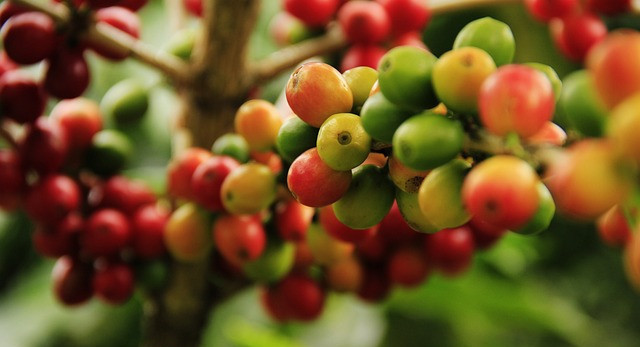
Coffee is not just a drink, it is a story. A story that began in the ancient lands of Ethiopia and Yemen, where coffee trees grew wild and people discovered their magical beans. A story that traveled across the seas and continents, where coffee was traded, cultivated, and consumed by different cultures and civilizations. A story that shaped the course of history, where coffee influenced the arts, sciences, politics, and religions of the world. Let’s take a look at some of the highlights of this amazing story.
The Discovery of Coffee
According to legend, coffee was first discovered by a goat herder named Kaldi in Ethiopia around the 9th century. He noticed that his goats became more energetic and playful after eating the red berries of a certain bush. Curious, he tried some of the berries himself and felt a similar effect. He then took some of the berries to a nearby monastery, where a monk brewed them into a drink. The monk found that the drink helped him stay awake and alert during his prayers. He shared his discovery with other monks, and soon coffee became a popular beverage among the religious community.
However, there is no historical evidence to support this legend. The earliest credible evidence of coffee drinking or knowledge of the coffee tree appears in the middle of the 15th century in Yemen, where coffee seeds were first roasted and brewed in a similar way to how it is prepared now. Coffee was used by Sufi circles to stay awake for their religious rituals.
The Spread of Coffee
From Yemen, coffee spread to other parts of the Arabian Peninsula, such as Mecca, Medina, Cairo, Damascus, Baghdad, and Istanbul. Coffee houses were established as places where people could socialize, entertain, and exchange ideas. They became known as “schools of wisdom” because of the intellectual and artistic activities that took place there. Coffee houses also attracted political and religious leaders, who sometimes tried to ban them for fear of dissent and rebellion. However, coffee drinking was too popular to be suppressed, and coffee houses continued to flourish.
By the 16th century, coffee reached Europe through trade with the Ottoman Empire. The first European coffee house was opened in Venice in 1645. Coffee houses soon spread to other European cities, such as London, Paris, Amsterdam, Vienna, and Berlin. They became centers of commerce, culture, and innovation. They also played important roles in the development of journalism, literature, science, philosophy, and democracy. Some of the famous figures who frequented coffee houses include Isaac Newton, Voltaire, Benjamin Franklin, Samuel Johnson, Jonathan Swift, Ludwig van Beethoven, and Wolfgang Amadeus Mozart.
The Cultivation of Coffee
While coffee was originally grown only in Africa and Arabia, it soon found its way to other parts of the world through exploration and colonization. One of the earliest cultivations of coffee in the New World was when Gabriel de Clieu brought coffee seedlings to Martinique in 1720. These beans later sprouted 18,680 coffee trees which enabled its spread to other Caribbean islands such as Saint-Domingue (now Haiti) and also to Mexico.
By 1788, Saint-Domingue supplied half the world’s coffee. By 1852 Brazil became the world’s largest producer of coffee and has held that status ever since. The period since 1950 saw the widening of the playing field owing to the emergence of several other major producers, notably Colombia, the Ivory Coast, Ethiopia, and Vietnam; the latter overtook Colombia and became the second-largest producer in 1999. Modern production techniques along with the mass productization of coffee have made it a household item today.
The Science of Coffee: What’s in Your Cup? The Chemistry and Biology of Coffee and Its Effects on You
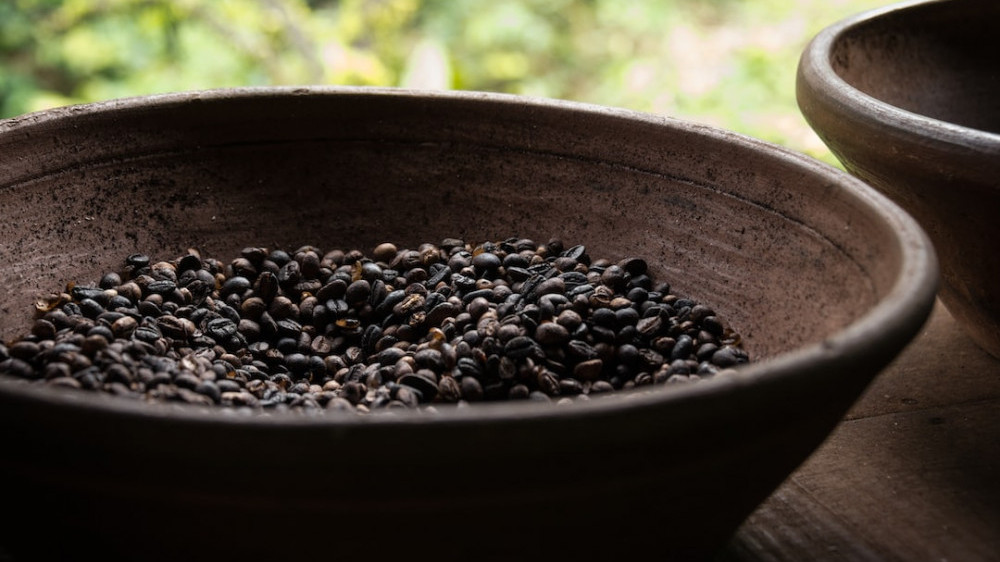
Coffee is not just a tasty drink, it is also a complex mixture of hundreds of chemical compounds that can affect your brain and body in various ways. Some of these compounds are naturally present in the coffee beans, while others are formed during the roasting and brewing processes.
Some of these compounds are beneficial for your health, while others can have negative effects if consumed in excess. In this section, we will explore some of the most important and interesting compounds in coffee and how they influence your mood, cognition, metabolism, and more.
Caffeine: The Most Famous Compound in Coffee
Caffeine is probably the most well-known and widely consumed compound in coffee. It is a stimulant that blocks the action of a chemical called adenosine in your brain. Adenosine is a neurotransmitter that makes you feel sleepy and relaxed. By blocking adenosine, caffeine increases the activity of other neurotransmitters, such as dopamine, norepinephrine, and acetylcholine, that enhance alertness, attention, motivation, and mood. Caffeine also boosts the production of adrenaline, a hormone that prepares your body for action and increases your heart rate, blood pressure, and breathing.
Caffeine can improve your cognitive performance, especially in tasks that require vigilance, reaction time, memory, and learning. Caffeine can also enhance your physical performance, especially in endurance sports, by increasing your energy expenditure, fat oxidation, and muscle contraction. However, caffeine can also have some negative effects, such as causing insomnia, anxiety, jitteriness, or dependence, if consumed in excess or at inappropriate times.
The effects of caffeine vary depending on the dose, the individual’s sensitivity, and the tolerance level. The average cup of coffee contains about 100 mg of caffeine, but this can vary depending on the type of coffee beans, roast level, and brewing method.
Tannin: The Bitter Compound in Coffee
Tannin is a type of polyphenol, a group of antioxidants that protect your cells from oxidative stress and inflammation. Tannins are responsible for the bitter and astringent taste of coffee. They can bind to proteins and minerals in your saliva and food, reducing their absorption and availability. Tannins can have both positive and negative effects on your health, depending on the dose and the type of tannin. Some tannins can lower your cholesterol levels, prevent bacterial infections, inhibit tumor growth, and modulate your immune system.
However, some tannins can also interfere with your digestion, cause nausea or vomiting, or reduce the bioavailability of iron and other essential nutrients. The amount of tannin in coffee depends on the type of coffee beans, roast level, and brewing method. Generally, darker roasts and longer brews have more tannin than lighter roasts and shorter brews.
Thiamin: The Vitamin Compound in Coffee
Thiamin is a type of vitamin B1, a water-soluble vitamin that is essential for your metabolism and nervous system. Thiamin helps your body convert carbohydrates into energy and supports the function of your brain cells. Thiamin can prevent or treat beriberi, a disease caused by thiamin deficiency that affects your muscles, heart, and nerves. Thiamin can also improve your mood, memory, and mental health by regulating the synthesis of neurotransmitters such as acetylcholine and serotonin. Coffee is a good source of thiamin, especially if it is brewed with filtered water or milk.
Xanthine: The Purine Compound in Coffee
Xanthine is a type of purine base, a building block of DNA and RNA. Xanthine is also a precursor of uric acid, a waste product that is excreted by your kidneys. Xanthine has similar effects as caffeine on your brain and body, as it also blocks adenosine receptors and increases the activity of other neurotransmitters. However, xanthine is less potent than caffeine and has a longer half-life in your bloodstream.
Xanthine can also increase your uric acid levels, which can cause gout or kidney stones if they accumulate in your joints or urinary tract. The amount of xanthine in coffee depends on the type of coffee beans, roast level, and brewing method. Generally, Robusta beans have more xanthine than Arabica beans, and darker roasts have more xanthine than lighter roasts.
Spermidine: The Anti-Aging Compound in Coffee
Spermidine is a type of polyamine, a molecule that regulates cell growth and differentiation. Spermidine is involved in autophagy, a process that removes damaged or unwanted parts of your cells and recycles them into new ones.
Autophagy can prevent or delay aging-related diseases such as Alzheimer’s disease, Parkinson’s disease, cancer, diabetes, and cardiovascular disease. Spermidine can also enhance your memory and learning by stimulating the formation of new synapses in your brain. Coffee is one of the richest dietary sources of spermidine.
Guaiacol: The Aromatic Compound in Coffee
Guaiacol is a type of phenol, a compound that gives coffee its distinctive aroma and flavor. Guaiacol is formed when lignin, a component of plant cell walls, is broken down by heat during roasting. Guaiacol has antibacterial and antifungal properties, and can also modulate pain perception and inflammation.
The amount of guaiacol in coffee depends on the type of coffee beans, roast level, and brewing method. Generally, Arabica beans have more guaiacol than Robusta beans, and lighter roasts have more guaiacol than darker roasts.
The Health Benefits of Coffee: The Good News About Coffee: How It Boosts Your Mood, Memory, and Metabolism
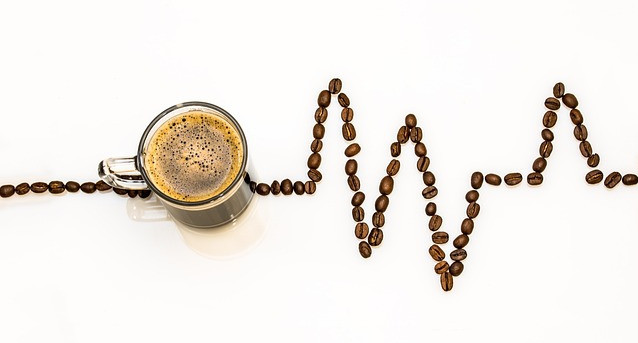
Coffee is not only a delicious drink, it is also a powerful ally for your health. Coffee can improve your mood, memory, and metabolism, and protect you from several chronic diseases. In this section, we will explore some of the amazing benefits of coffee for your mind and body, backed by scientific evidence.
How Coffee Boost Your Mood
Coffee can improve your mood by stimulating the production of neurotransmitters such as dopamine, serotonin, and endorphins, which are responsible for feelings of happiness, satisfaction, and well-being. One study found that drinking coffee was associated with lower levels of depression
and suicidal thoughts among women. Another study found that drinking coffee reduced the risk of developing postpartum depression among new mothers.
How Coffee Boost Your Memory
Coffee can enhance your memory by increasing the activity of brain regions involved in learning, recall, and consolidation, such as the hippocampus, the prefrontal cortex, and the striatum. One study found that drinking coffee before a memory test improved performance
and reduced forgetting. Another study found that drinking coffee after a learning session enhanced long-term memory retention.
How Coffee Boosts Your Metabolism
Coffee can boost your metabolism by increasing the rate of energy expenditure, fat oxidation, and thermogenesis, which are the processes that burn calories and generate heat in the body. One study found that drinking coffee increased the resting metabolic rate by 3–11% and the fat-burning rate by 10–29%. Another study found that drinking coffee before exercise increased the amount of calories burned during and after exercise by 15%.
How Coffee Protects You From Chronic Diseases
Coffee can also protect you from several chronic diseases that are more common in women, such as type 2 diabetes, Alzheimer’s disease, Parkinson’s disease, liver disease, and some types of cancer. Here are some of the ways coffee can help prevent or delay these diseases:
- Coffee can lower your blood sugar levels and improve your insulin sensitivity, which are key factors in preventing or managing type 2 diabetes. One review of 30 studies found that each cup of coffee people consumed per day was linked to a 6% lower risk of developing type 2 diabetes.
- Coffee can preserve the function of your brain cells and prevent the accumulation of toxic proteins that cause Alzheimer’s disease. One review of 11 studies found that people who drank three to five cups of coffee per day had a 65% lower risk of developing Alzheimer’s disease than those who drank less or no coffee.
- Coffee can increase the levels of dopamine and other neurotransmitters that are involved in movement control and prevent the degeneration of brain cells that cause Parkinson’s disease. One review of 13 studies found that people who regularly consumed caffeine had a significantly lower risk of developing Parkinson’s disease.
- Coffee can reduce inflammation and oxidative stress in your liver and prevent liver damage caused by alcohol, viruses, or toxins. One review of nine studies found that people who drank two or more cups of coffee per day had a 44% lower risk of developing liver cirrhosis than those who drank less or no coffee.
- Coffee can inhibit the growth and spread of cancer cells by modulating the expression of genes involved in cell cycle regulation, apoptosis, angiogenesis, and metastasis. One review of 40 studies found that people who drank four or more cups of coffee per day had a 24% lower risk of developing colorectal cancer than those who drank less or no coffee.
As you can see, coffee is not only a tasty drink but also a healthful one. However, keep in mind that moderation is key. Experts recommend limiting your caffeine intake to no more than 400 mg per day, which is equivalent to about four cups of regular coffee. You should also avoid adding too much sugar, creamer, or syrups to your coffee, as they can add extra calories and negate some of the benefits.
The Art of Coffee: How to Make the Perfect Cup of Coffee: Tips, Tricks, and Recipes for Coffee Lovers
Coffee is not only a science, it is also an art. There are many ways to make and enjoy coffee, and each one has its charm and appeal. Whether you prefer a simple drip coffee or a more elaborate espresso-based drink, you can always experiment with different techniques, ingredients, and flavors to create your masterpiece. In this section, we will share some tips, tricks, and recipes for coffee lovers who want to make the perfect cup of coffee at home.
Tips for Making the Perfect Cup of Coffee

If you want to make the perfect cup of coffee at home, you need to pay attention to some details that can make a big difference in the taste and quality of your coffee. Here are some tips that can help you achieve the best results with your coffee brewing:
Use fresh and high-quality coffee beans: The quality and freshness of your coffee beans will make a big difference in the taste and aroma of your coffee. Choose beans that are roasted within the last two weeks, and store them in an airtight container away from light, heat, and moisture. You can also buy whole beans and grind them yourself right before brewing for maximum freshness.
Use the right grind size for your brewing method: The grind size of your coffee affects how much flavor and strength you extract from the beans. Different brewing methods require different grind sizes, ranging from coarse to fine. For example, a French press requires a coarse grind, like kosher salt, while an espresso machine requires a fine grind, like powdered sugar. You can use a burr grinder to get a consistent and uniform grind every time.
Use the right water temperature and ratio for your brewing method: The water temperature and ratio also affect how much flavor and strength you extract from the coffee grounds. Different brewing methods require different water temperatures and ratios, ranging from 195°F to 205°F and from 1:15 to 1:18 (coffee to water). For example, a pour-over requires a water temperature of around 200°F and a ratio of 1:16, while an espresso requires a water temperature of around 195°F and a ratio of 1:2. You can use a digital thermometer and a scale to measure the water temperature and ratio accurately.
Use filtered or bottled water for your coffee: The quality of the water you use for your coffee also affects the taste and aroma of your coffee. Tap water may contain chlorine, minerals, or other impurities that can alter or mask the flavor of your coffee. Filtered or bottled water can provide a cleaner and purer taste for your coffee.
Clean your equipment regularly: The cleanliness of your equipment also affects the taste and aroma of your coffee. Coffee oils, residues, or bacteria can build up on your equipment over time and cause off-flavors or spoilage in your coffee. You should clean your equipment regularly with hot water, vinegar, or special cleaners designed for coffee makers.
Tricks for Making the Perfect Cup of Coffee

You can also try some tricks that can enhance the flavor and aroma of your coffee. Here are some tricks that can make your coffee brewing more fun and creative:
Preheat your equipment before brewing: Preheating your equipment before brewing can help maintain the optimal temperature and extraction of your coffee. You can preheat your equipment by rinsing it with hot water or running it without coffee grounds. This can also remove any dust or dirt that may have accumulated on your equipment.
Bloom your coffee grounds before brewing: Blooming your coffee grounds before brewing can help release the carbon dioxide gas that is trapped in the roasted beans. This can enhance the flavor and aroma of your coffee by allowing more water to contact the grounds and extract more oils and compounds. You can bloom your coffee grounds by pouring a small amount of hot water over them and letting them sit for about 30 seconds before adding the rest of the water.
Stir your coffee grounds during brewing: Stirring your coffee grounds during brewing can help distribute the water evenly over the grounds and prevent channeling or uneven extraction. This can improve the flavor and strength of your coffee by ensuring that all the grounds are fully saturated and extracted. You can stir your coffee grounds gently with a spoon or a chopstick during brewing.
Wet your filter before brewing: Wetting your filter before brewing can help remove any paper taste or residue that may affect the taste of your coffee. It can also help seal the filter to the brewer and prevent any leaks or spills during brewing. You can wet your filter by rinsing it with hot water before adding the coffee grounds.
Store your brewed coffee in a thermal carafe or mug: Storing your brewed coffee in a thermal carafe or mug can help keep it hot and fresh for longer. It can also prevent over-extraction or bitterness that may occur if you leave your coffee on a hot plate or a burner. You can use a thermal carafe or mug that has a lid or a seal to prevent heat loss and oxidation.
Recipes for Making the Perfect Cup of Coffee

If you want to make the perfect cup of coffee at home, you can try Classic Frip Coffee, French Press Coffee, or Cold Brew Coffee, which are well-known coffee recipes. But you can also try some outstanding and out-of-the-ordinary recipes that use different spices and flavors to create a unique and delicious coffee experience. You can experiment with different combinations and proportions of spices and ingredients to suit your taste and preference. Here are some of the recipes you can try:
Coffee with Cloves and Cinnamon: This is a warm and cozy way to make coffee at home, especially during the cold season. Cloves and cinnamon add a spicy and sweet touch to your coffee, as well as some health benefits. Cloves can help with digestion, inflammation, and pain relief, while cinnamon can help with blood sugar, cholesterol, and immunity.
Add two or three whole cloves and a half teaspoon of ground cinnamon to the coffee grounds. You can also use a cinnamon stick instead of ground cinnamon for a more subtle flavor.
Coffee with Ginger: This is a refreshing and zesty way to make coffee at home, especially if you need a boost of energy or immunity. Ginger adds a spicy and tangy flavor to your coffee, as well as some health benefits. Ginger can help with nausea, digestion, inflammation, and infection.
Peel and chop a small piece of fresh ginger root. You can also use grated or powdered ginger if you prefer. Add the ginger to the coffee grounds. You can adjust the amount of ginger according to your taste and spice tolerance.
Coffee with Cardamom: This is a fragrant and exotic way to make coffee at home, especially if you like a hint of spice and sweetness in your coffee. Cardamom adds a floral and nutty flavor to your coffee, as well as some health benefits. Cardamom can help with digestion, bad breath, blood pressure, and mood.
Crush two or three green cardamom pods with a mortar and pestle or a knife. You can also use ground cardamom if you prefer. Add the cardamom to the coffee grounds. You can adjust the amount of cardamom according to your taste and preference.
Coffee with Anise: This is a licorice-like and aromatic way to make coffee at home, especially if you like a touch of bitterness and complexity in your coffee. Anise adds a sweet and spicy flavor to your coffee, as well as some health benefits. Anise can help with digestion, cough, asthma, and menstrual pain.
Crush one or two star anise pods with a mortar and pestle or a knife. You can also use anise seeds or anise extract if you prefer. Add the anise to the coffee grounds. You can adjust the amount of anise according to your taste and tolerance.
These are some of the outstanding and out-of-the-ordinary recipes that you can try to make the perfect cup of coffee at home. You can also experiment with other spices and flavors that you like or have at home, such as vanilla, nutmeg, mint, chocolate, coconut, almond, hazelnut, etc. The possibilities are endless!
The Care of Coffee: How to Keep Your Coffee Fresh and Flavorful
Coffee is a precious commodity that deserves proper care and attention. If you want to enjoy the best flavor and aroma of your coffee, you need to store and preserve it in the right way. Let´s see some dos and don’ts of storing and preserving coffee, so you can make the most of your coffee experience.
Store your coffee in an opaque, airtight container at room temperature: This will protect your coffee from exposure to air, moisture, heat, and light, which are the main enemies of coffee freshness. You can use a ceramic, glass, or metal container with a rubber or silicone seal. Avoid clear or plastic containers that can let in light or odors.
Don’t store your coffee in the fridge or freezer: Contrary to popular belief, storing your coffee in the fridge or freezer is not a good idea. The humidity and temperature fluctuations can cause condensation and freezer burn, which can ruin the taste and quality of your coffee. Moreover, coffee can absorb the smells and flavors of other foods in the fridge or freezer, which can affect its flavor.
Do buy small batches of freshly roasted coffee beans: The best way to ensure freshness is to buy small batches of freshly roasted coffee beans from a local roaster or online retailer. Ideally, you should buy only enough coffee to last for one or two weeks, and use it as soon as possible after opening the package. Freshly roasted coffee beans have more flavor and aroma than stale or old ones.
Don’t buy pre-ground coffee or grind your coffee too far in advance:
Grinding your coffee exposes more surface area to oxygen, which speeds up the oxidation process and reduces the freshness and flavor of your coffee. Pre-ground coffee is more convenient, but it also loses its freshness faster than whole beans. If you want to enjoy the best flavor and aroma of your coffee, you should grind your coffee right before brewing it, using a burr grinder that gives you a consistent and uniform grind size.
Do use filtered or bottled water for brewing your coffee: The quality of the water you use for brewing your coffee also affects the taste and aroma of your coffee. Tap water may contain chlorine, minerals, or other impurities that can alter or mask the flavor of your coffee. Filtered or bottled water can provide a cleaner and purer taste for your coffee. You should also use water that is heated to about 200°F (93°C), which is the optimal temperature for extracting the flavor and strength from your coffee grounds.
Don’t reheat or microwave your brewed coffee: Reheating or microwaving your brewed coffee can destroy its flavor and aroma, as well as create bitter and sour notes. If you want to keep your brewed coffee hot and fresh for longer, you should use a thermal carafe or mug that has a lid or a seal to prevent heat loss and oxidation. You can also add ice cubes if you like it chilled.
These are some of the dos and don’ts of storing and preserving coffee that you should follow if you want to enjoy the best cup of coffee every time. In the next section, I will tell you about some fun and creative ways to use leftover coffee that you may have at home.
Conclusion
Coffee is more than just a drink, it is a story, a science, an art, and a health booster. Coffee has a long and rich history that spans across different regions and cultures. It has influenced the course of history by inspiring the arts, sciences, politics, and religions of the world.
Coffee is a complex mixture of hundreds of chemical compounds that can affect your brain and body in various ways. Some of these compounds are beneficial for your health, while others can have negative effects if consumed in excess. You can optimize the flavor and quality of your coffee by choosing the right type of beans, roast level, and brewing method.
Coffee can improve your mood, memory, and metabolism, and protect you from several chronic diseases. It can stimulate the production of neurotransmitters that enhance alertness, attention, motivation, and mood. Coffee can also increase the activity of brain regions that are involved in learning, recall, and consolidation. It can also boost the rate of energy expenditure, fat oxidation, and thermogenesis in your body. Coffee can also lower your risk of developing type 2 diabetes, Alzheimer’s disease, Parkinson’s disease, liver disease, and some types of cancer.
Coffee is an art that you can enjoy in different ways. You can experiment with different techniques, ingredients, and flavors to create your masterpiece. You can also follow some tips, tricks, and recipes to make the perfect cup of coffee at home.
Coffee is truly the ultimate drink for your mind, body, and soul. It can make you happier, smarter, faster, and healthier. It can also bring you joy, pleasure, and satisfaction. So go ahead and treat yourself to a cup of coffee today. You deserve it!


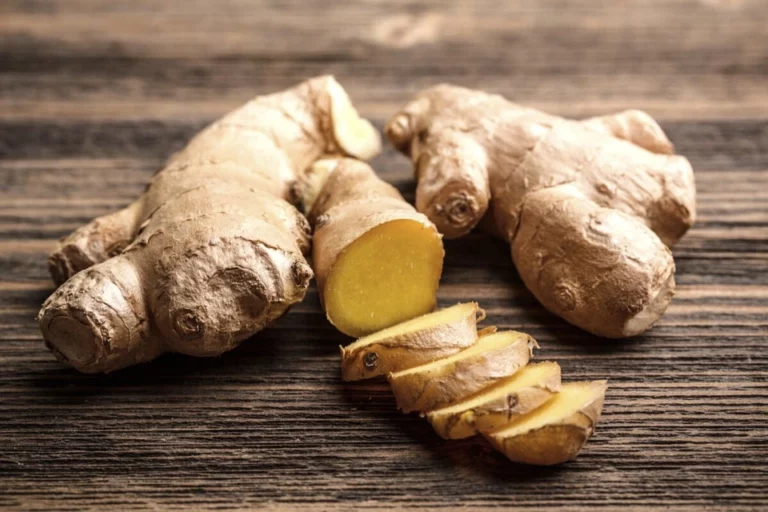
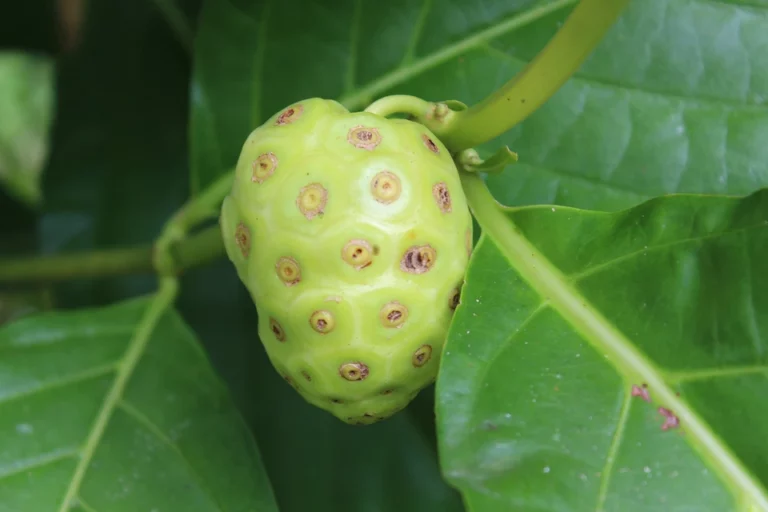
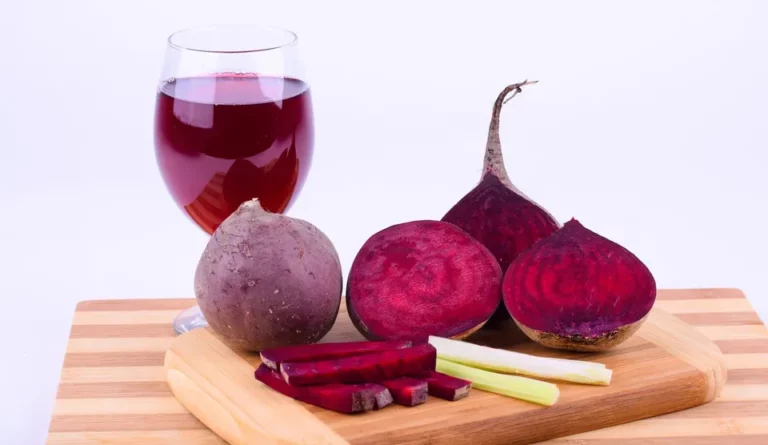

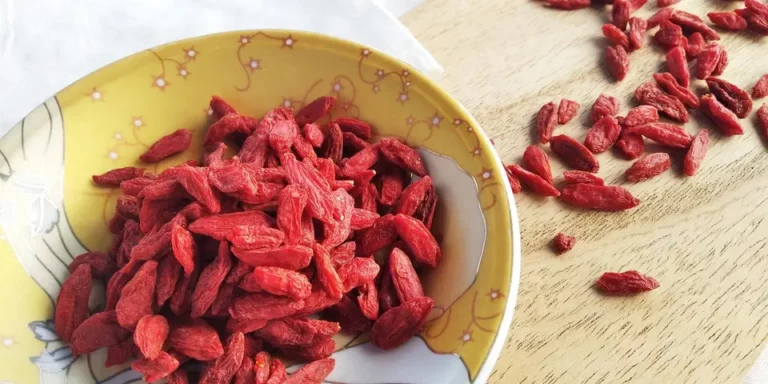
I love your post about coffee. I enjoyed the history and the explanation of coffee’s benefits. I always delve into where and how different beverages came about, what different types, flavors and how they are made. Coffee, teas, beers, wines are all interesting and have things unique to learn about them. Giving us instructions on how to make a good cup of coffee was a great addition to your post. Living in Italy where they make some of the best coffee, I learned how to make espresso several ways along with cappuccino and various coffee based drinks. One thing about the advice on cleaning coffee pots, the Italians would not clean their moka coffee pots because they believed the build up of coffee oils on the metal gave the coffee a better taste. I learned that the hard way when my neighbor caught me washing my little moka coffee maker. They just rinsed them well after brewing and air dried them. The more the build up, the better. I will follow your blog to see what other nutrition and health tips you share in the future.
Hi Delois, thank you so much for your lovely comment. I’m happy to hear that you love this post about coffee and that you enjoyed learning about its history and benefits. I appreciate your feedback and your insights on how different cultures enjoy coffee. I have heard before that Italians don’t clean their moka coffee pots and that they believe it enhances the flavor. I found this very interesting. Expressos, cappuccinos, and even Italian espresso machines are very popular here in Venezuela, where I live.
Thank you for following my blog and for your interest in nutrition and health tips. I hope you find my future posts helpful and informative. Feel free to share your thoughts and questions anytime.
Hello there! I’m new to this topic of coffee, but after reading your comprehensive article about the benefits and intricacies of coffee, I’ve become quite intrigued. I’ve always enjoyed coffee, but I had no idea that it had such a rich history and that there’s so much to learn about its effects on health and the various ways to prepare it.
Your article covered so much ground, but one thing that caught my attention is the section about the compounds in coffee and how they influence the body. It’s fascinating how different compounds like caffeine, tannin, thiamin, xanthine, and even spermidine can have such diverse effects on our health. I’d love to know more about the interaction between these compounds. Specifically, how do they work together to produce the range of benefits you mentioned, like boosting mood and memory, improving metabolism, and even protecting against diseases?
Also, with all these compounds at play, does the type of coffee bean, the roast level, or the brewing method impact the balance of these compounds and their effects on the body? As a beginner, I find the science behind coffee’s effects quite intriguing, and understanding this better could help me appreciate the art of making a perfect cup of coffee even more.
Hi Skamalka, thank you for your kind comment. I’m glad you found this article about coffee informative and comprehensive. I’m happy to hear that you’re new to this topic and that you’re intrigued by the benefits and intricacies of coffee.
You asked some exciting questions about the compounds in coffee and how they influence the body. I appreciate your curiosity and your desire to learn more. Coffee is a very complex product with so many fascinating compounds that provide a wide range of benefits that require deep analysis to understand how they work together. If you are interested in such a level of understanding I can share with you some of the sources that I used to write my article and some of the research that I found on this topic.
First, look at A Detail Chemistry of Coffee and Its Analysis (researchgate.net) for a brief review that provides a detailed chemistry of coffee and its analysis. Another source you can review is Coffee: biochemistry and potential impact on health – PubMed (nih.gov) where you can find details on the phytochemicals in green coffee beans and the changes that occur during roasting.
As for your question about how the type of coffee bean, the roast level, or the brewing method impact the balance of these compounds and their effects on the body, there is no simple answer to that. Different types of coffee beans have different chemical compositions and different amounts of caffeine and other compounds. Different roast levels affect the degradation and formation of these compounds. Different brewing methods extract different amounts and proportions of these compounds. All these factors influence coffee’s taste, aroma, and physiological effects. The best way to find out what works for you is to experiment with different combinations and see how they make you feel.
I hope this helps you understand the science behind coffee’s effects better and appreciate the art of making a perfect cup of coffee even more. Thank you for reading my blog and for your interest in nutrition and health tips.